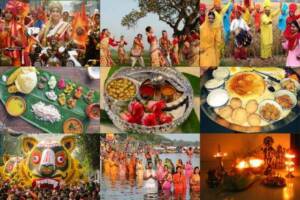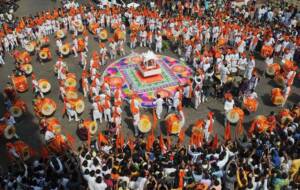Regional New Year Celebrations in India: A Tapestry of Traditions and Festivities
India, with its rich cultural tapestry and diverse traditions, celebrates New Year in various ways across different regions. Each state and community has its unique customs, festivals, and traditions that mark the beginning of a new year. This vibrant mosaic of regional New Year celebrations showcases India’s incredible diversity and the deep-rooted cultural heritage that binds its people together.
RX REJUVENATE, THE BEST SKINCARE CLINIC LOCATED IN NORTH DELHI IS ONE OF THE GREAT SUPPORTER AND FOLLOWER OF REGIONAL NEW YEAR CELEBRATIONS WHICH LEADS THE PATHWAY TO NATION’S EMPOWERMENT AND ENCOURAGING US TO DELIVER MORE EFFICIENT AND TARGETED RESULTS TO OUR CLIENTS.
1. Ugadi – The New Year of the Deccan
In the Deccan region, particularly in Andhra Pradesh, Telangana, and Karnataka, Ugadi marks the New Year. Celebrated in March or April, Ugadi is a festival that signifies the arrival of spring and the start of a new harvest season. The festival begins with special prayers and rituals, and homes are decorated with mango leaves, which are believed to bring prosperity.
- Traditions: On Ugadi, people prepare a special dish called “Ugadi Pachadi,” made from jaggery, tamarind, and raw mango. This mixture symbolizes the various experiences of life, including joy, sadness, and sweetness, reflecting the holistic nature of existence. The day also includes cultural performances, music, and dance.
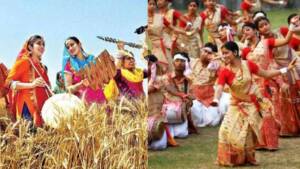 2. Pongal – The Harvest Festival in Tamil Nadu
2. Pongal – The Harvest Festival in Tamil Nadu
In Tamil Nadu, New Year is celebrated as Pongal, a major festival that usually takes place in mid-January. Pongal is primarily a harvest festival dedicated to the Sun God, marking the end of the winter solstice and the beginning of the harvest season.
- Traditions: The highlight of Pongal is the preparation of a special dish, also called “Pongal,” made from freshly harvested rice, milk, and jaggery. This dish is cooked in an open pot until it overflows, symbolizing abundance and prosperity. The festival also includes traditional dances, music, and games, creating a lively and joyous atmosphere.
3. Baisakhi – The Sikh New Year
Baisakhi, celebrated in Punjab and by the Sikh community worldwide, falls on April 13 or 14. This festival not only marks the Punjabi New Year but also commemorates the formation of the Khalsa in 1699 by Guru Gobind Singh Ji.
- Traditions: Baisakhi is marked by vibrant processions, singing of devotional songs, and traditional dance forms like Bhangra and Gidda. The day begins with visits to the Gurdwara (Sikh temple) for special prayers. People also celebrate by wearing colorful traditional attire and preparing festive meals.
4. Gudi Padwa – Maharashtrian New Year
Gudi Padwa is celebrated in Maharashtra and marks the Marathi New Year. This festival falls in March or April and is observed with great enthusiasm. It signifies the beginning of the new year according to the Hindu lunisolar calendar.
- Traditions: The festival involves hoisting the “Gudi,” a colorful cloth tied to a bamboo stick, adorned with flowers and a brass pot. This symbolizes victory and prosperity. People also prepare traditional sweets like “Puran Poli” and enjoy festive meals with family and friends. The day is marked by community events, cultural performances, and traditional games.
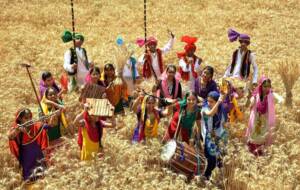 5. Vaisakhi – The New Year of the Punjabi and Northern Regions
5. Vaisakhi – The New Year of the Punjabi and Northern Regions
Vaisakhi, often celebrated around April 13, is a significant festival in Punjab and northern India. It marks the beginning of the harvest season and holds special religious significance for Sikhs.
- Traditions: Celebrations include visiting Gurdwaras for prayers, participating in community feasts, and engaging in traditional dance forms like Bhangra. The festival also features fairs and cultural performances that highlight Punjab’s rich heritage and agricultural traditions.
6. Onam – The Harvest Festival of Kerala
Onam is the most important festival in Kerala and is celebrated in August or September. This ten-day festival honors the mythical King Mahabali and marks the end of the monsoon season and the beginning of the harvest.
- Traditions: Onam is celebrated with elaborate feasts known as “Onam Sadya,” which includes a variety of traditional dishes served on a banana leaf. The festival also features vibrant floral decorations, traditional dance performances like “Kathakali,” and the famous snake boat races known as “Vallam Kali.”
7. Lohri – The Punjabi Harvest Festival
Lohri is celebrated primarily in Punjab and northern India in January. It marks the end of winter and the beginning of the harvest season, particularly the harvest of sugarcane.
- Traditions: The festival is celebrated with bonfires around which people gather to sing traditional songs and dance to the beats of the “Dhol.” The festival also includes enjoying sweets made from sugarcane, such as “Gachak” and “Tilgul,” and partaking in festive meals with family and friends.
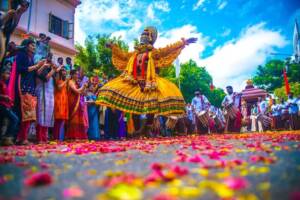 8. Pohela Boishakh – The Bengali New Year
8. Pohela Boishakh – The Bengali New Year
Pohela Boishakh is the Bengali New Year celebrated in West Bengal and Bangladesh on April 14 or 15. It marks the beginning of the new year in the Bengali calendar and is a time for festive gatherings and celebrations.
- Traditions: The festival includes wearing new clothes, preparing special Bengali dishes, and participating in cultural events. Traditional fairs and processions featuring music, dance, and art are common. The day is also marked by the “Halkhata” tradition, where merchants close their old account books and open new ones.
Conclusion
India’s diverse New Year celebrations reflect its rich cultural heritage and regional traditions. From the vibrant festivities of Pongal in Tamil Nadu to the colorful Gudi Padwa in Maharashtra, each celebration is a testament to the country’s cultural richness and unity. These regional festivals not only mark the beginning of a new year but also celebrate the harvest, honor deities, and bring communities together. As India continues to embrace its multifaceted heritage, these regional New Year celebrations remain a cherished part of its cultural tapestry. Regional New Year Regional New Year Regional New Year
